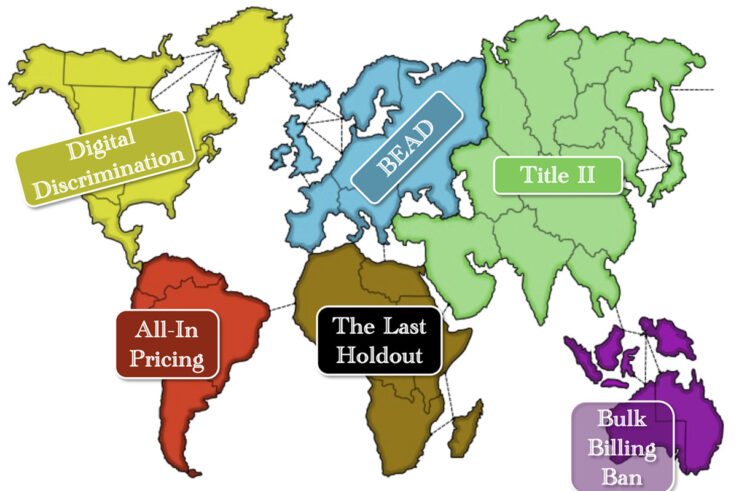This article is a part of the Unfair Methods of Competition Symposium symposium.
In this posting, I sketch out a sensible limitation to the FTC’s Section 5 authority. This domain should be narrow, focusing only on harmful conduct that but for the application of Section 5 would remain un-remedied.
As a threshold matter, the FTC explicitly should renounce its reliance on early Section 5 case law like S&H and Brown Shoe and write from a clean slate. No serious antitrust enforcer today would consider challenging the conduct at issue in these cases, yet, in each of its recent standard-setting cases, the Commission dutifully invokes the language in S&H and Brown Shoe like a sacred talisman that will conjure the authority to act beyond the “letter and spirit of the antitrust laws.” This dicta, however, comes from seriously outmoded cases. For example, S&H upheld the Commission’s challenge to the practice of preventing unauthorized green-stamp exchanges, and cited approvingly a Section 5 decision from 1934 that condemned the practice of selling penny candy to children in “break and take” packs, because “it tempted children to gamble and compelled those who would successful compete with Keppel to abandon their scruples by similarly tempting children.”[1] Brown Shoe and S&H were decided in the era of Schwinn and Utah Pie. Sherman Act case law has moved light years in the direction of economic literacy since then, and the Commission should recognize that had the Supreme Court entertained Section 5 case in the past forty years, precedents like S&H and Brown Shoe likely would have met fates similar to these outmoded cases.
Second, the FTC should not use Section 5 when the conduct at issue is reachable under the Sherman or Clayton Acts. Section 5 should never be used as a trump card to reduce the Commission’s burden to show a practice is harmful to consumers. If the Commission cannot carry its burden under the Sherman Act, then presumably the conduct is not likely to be a threat to competition.
Third, the Commission must explain how consumers would benefit from expansion of the antitrust laws beyond the current Sherman Act limits. Again, merely because there is old Supreme Court language blessing an expansive Section 5 does not ipso facto convert Section 5 enforcement beyond the Sherman Act into a welfare-enhancing exercise. Accordingly, demonstrable consumer harm must be a necessary condition for invoking Section 5 against a particular practice.
Further, to mitigate the possibility of errors, and hence the probability that FTC action is welfare enhancing, the practice in question should be one that is unlikely to generate cognizable efficiencies. Thus the FTC should limit itself to the type of conduct that would be subject to per se or a “quick look” condemnation – the type of conduct that can be assessed without an elaborate inquiry into market characteristics. It should avoid using Section 5 to challenge conduct that would require complex balancing.
How would such a standard treat the FTC’s portfolio of Section 5 cases? First, ITCs involving small firms would remain. This conduct is not reachable under Sherman Act and is likely to generate substantial consumer harm. At the same time, the risk of deterring beneficial conduct is minimal, although as one moves from private solicitations to engage in price fixing or market allocation towards public communications and unilateral conduct, the calculus changes. Relatedly, involving information sharing seems sensible to retain as well. Like ITCs, this conduct is not reachable under the Sherman Act (assuming sufficiently low market shares), poses a significant threat to competition, and it is hard to justify on efficiency grounds. Of course, the Sherman Section 1 can reach agreements among competitors to exchange competitively sensitive information, so this genre of cases should be limited to instances where an agreement cannot be shown. Further, as in the ITC case, the FTC needs to tread carefully as the conduct moves further from direct and private exchanges of future competitive actions toward unilateral public announcements of current and past price and output decisions. Bolstering the case for the use of Section 5 in these cases is that both ITCs and information sharing cases fall under the broad rubric of incipient harms. Legislative history and subsequent Supreme pronouncements suggest that Congress intended Section 5 to concern itself with incipiency – a concern lacking in the Sherman Act.
The FTC should abandon its use of Section 5 to reach breaches of FRAND commitments. Although policies that encourage participation in standard setting are likely to be beneficial to consumers, it is not evident that Section 5 is the best – or even a good – vehicle to address these issues. That hold-up may result in a higher end price for consumers is insufficient to justify use of Section 5. There are a host of institutions arguably better suited than the FTC to handle these policy issues, including Article III courts, the ITC, the Patent & Trademark Office, Congress, and self-regulatory bodies. As Commissioner Ohlhausen remarked in her dissent in Bosch, the FTC appears to lack “regulatory humility when it usurps the resolution of FRAND disputes from these other fora.
Finally, deceptive conduct in business-to-business relationships – such as that alleged in Intel or Dell– should be left out of the portfolio entirely. To the extent that deception gives rise to, or helps maintain, monopoly power, it is reachable under Sherman Section 2. Otherwise, deception should be left to the domain of contract law or business torts. Further, these practices should not be challenged under UDAP, which should be confined to deception that directly involves consumers.
[1] S&H, 405 U.S. at 242-43 (quoting FTC v. R.F. Keppel & Bro., Inc., 291 U.S. 304 (1934)).




